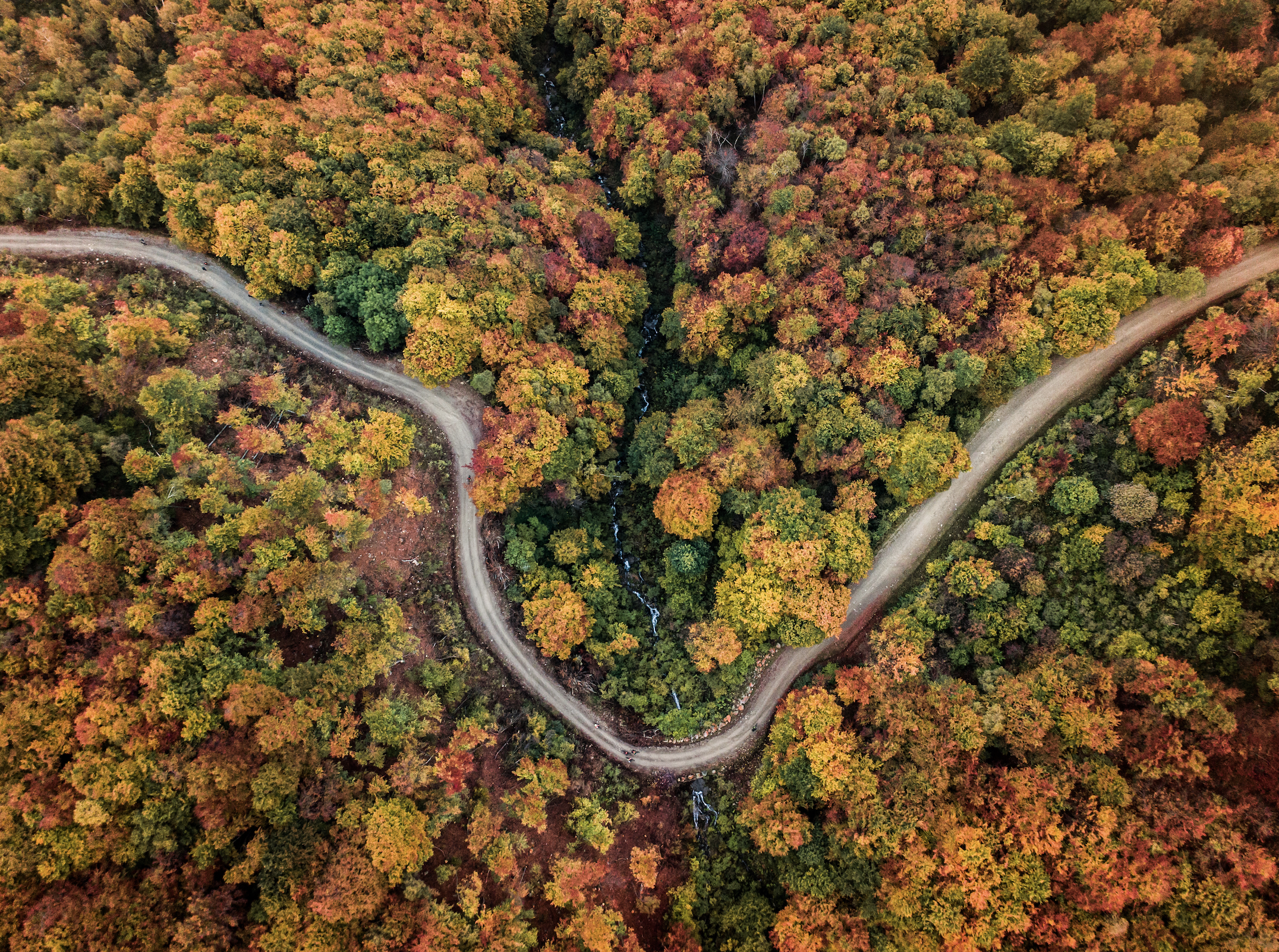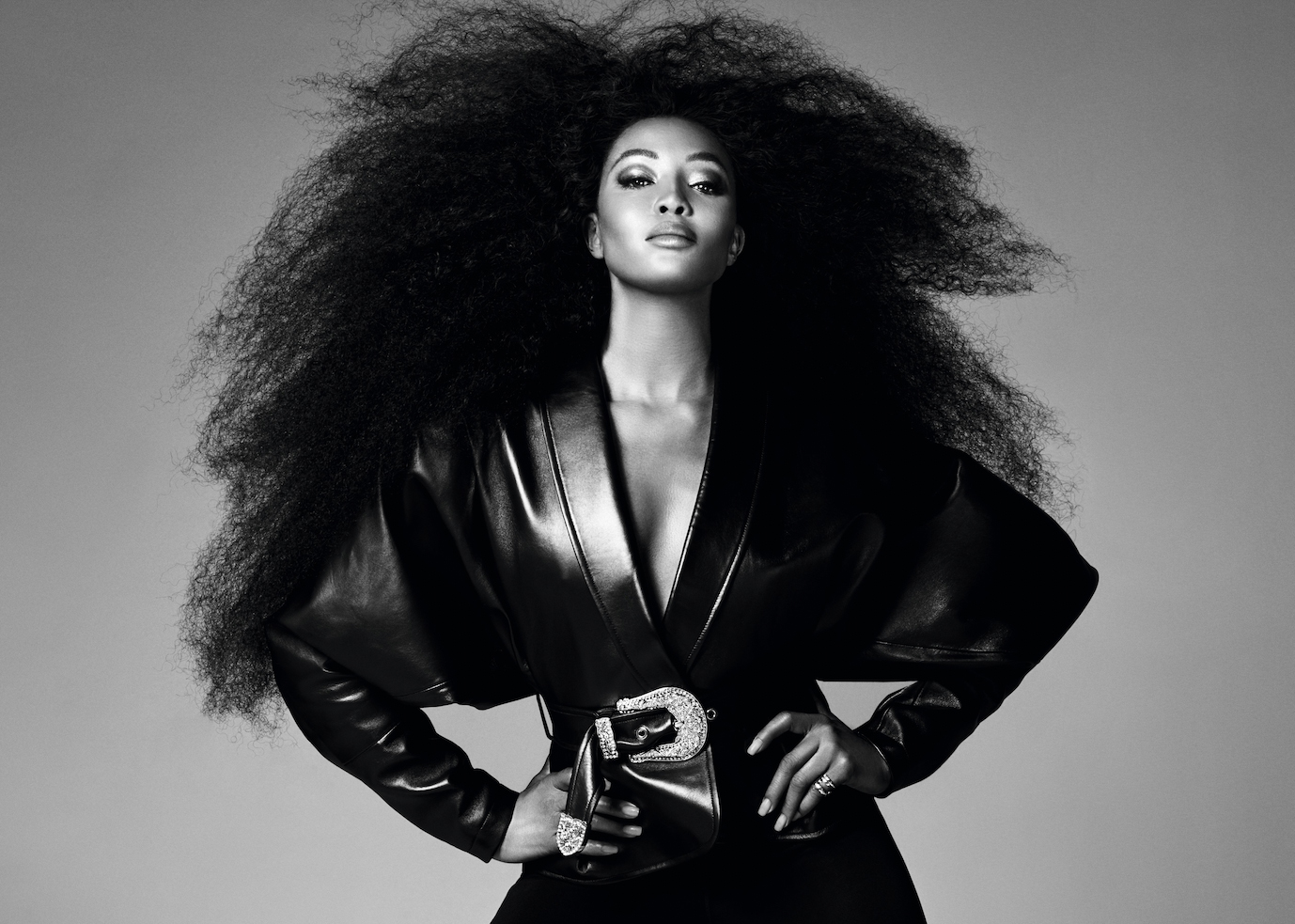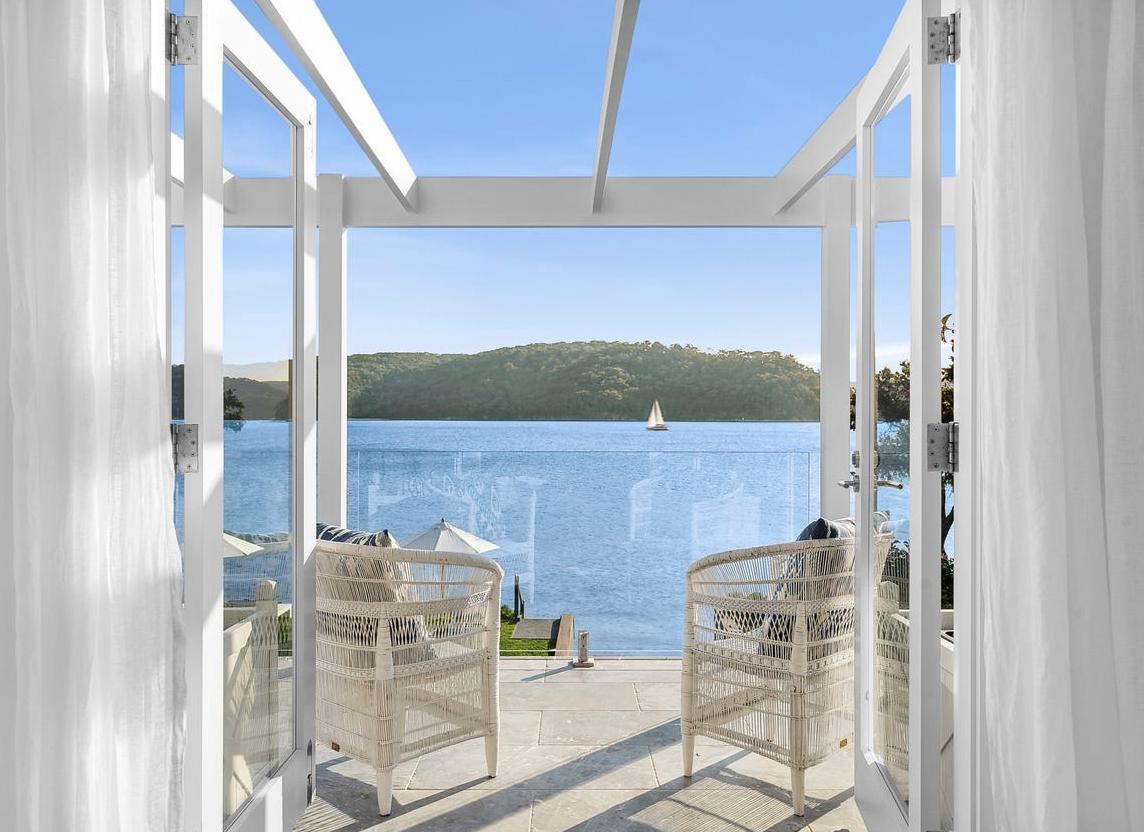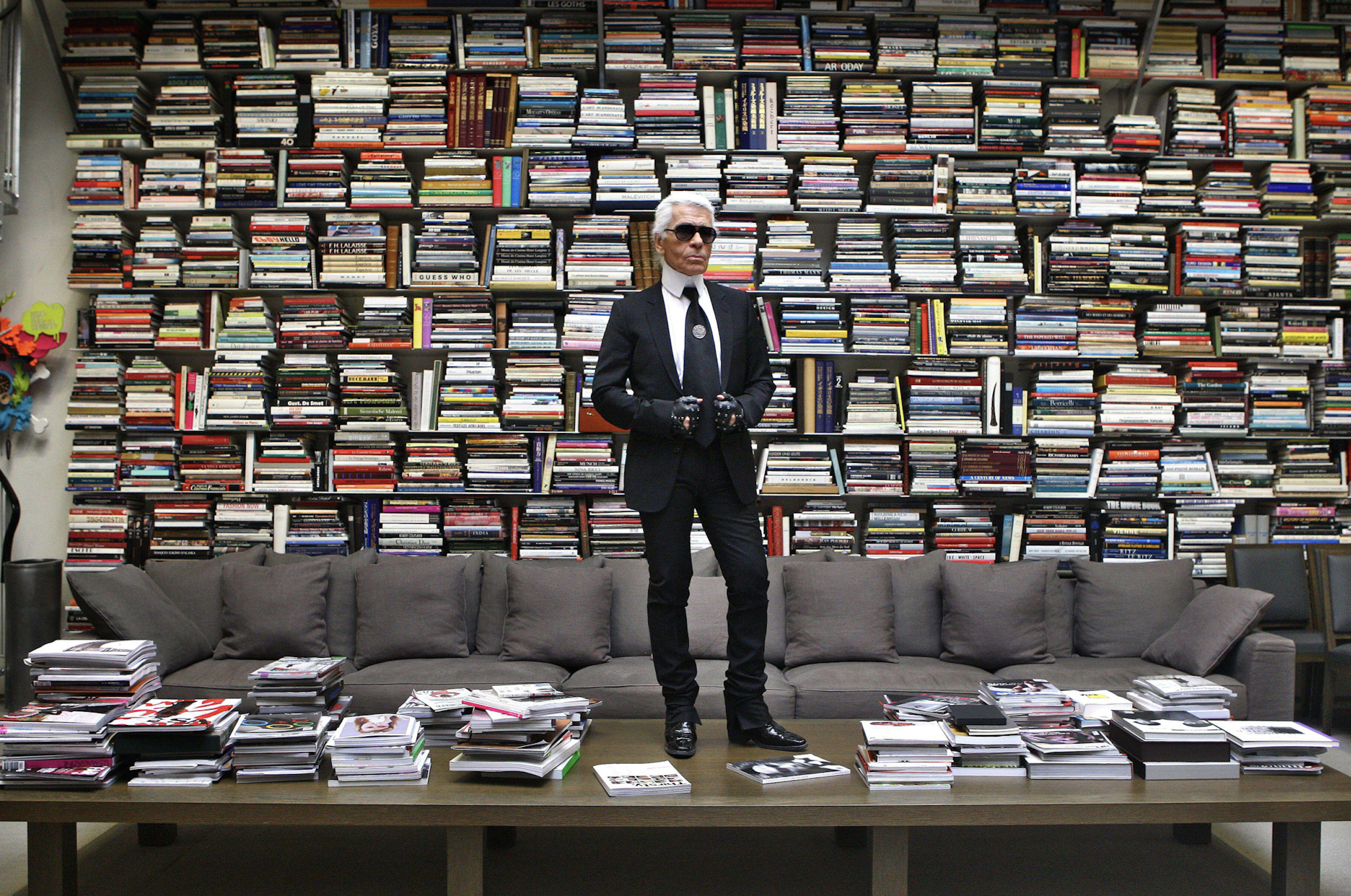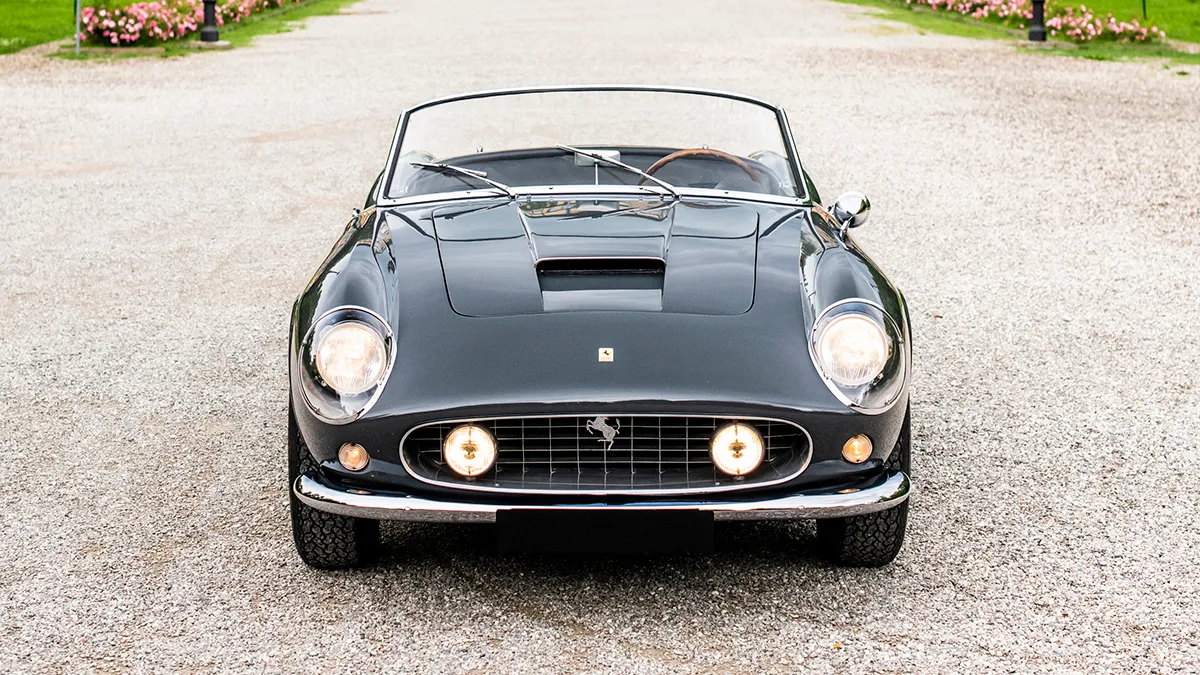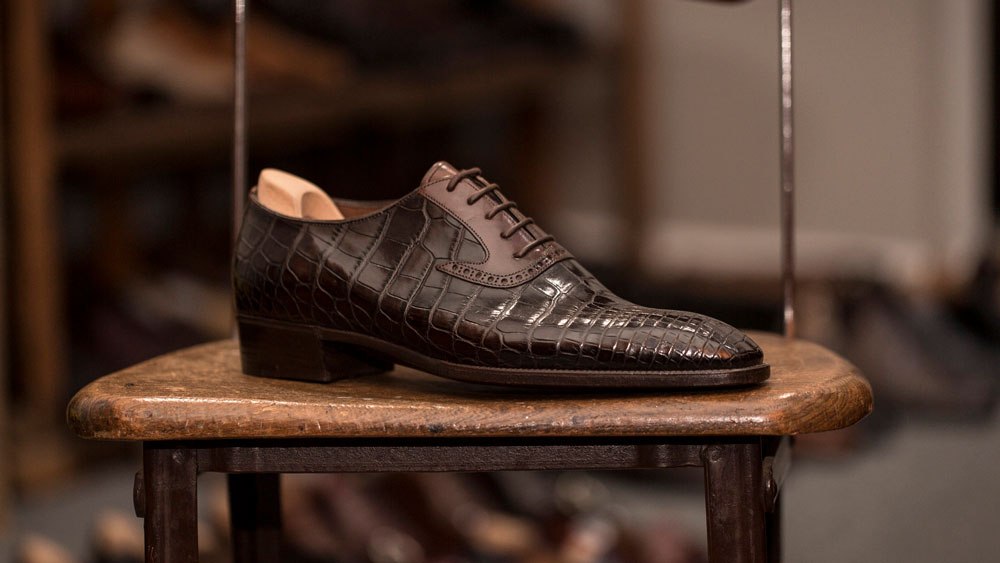
Robb Report’s definitive shoe guide
Here’s everything you need to know about your favorite accessory—from the essential styles to the best bespoke brands.
Related articles
Any well-heeled gentleman knows that shoes make the man. The right footwear can exude elegance, infuse a splash of personality, or give that formal suit a sporty spirit. And while enthusiasm for everyone’s favourite accessory runs deep, how much do you really know about shoes? Below, we test your knowledge, breaking down the 10 styles that should form the quite literal stepping stones of every well-rounded collection. From settling the difference between an oxford and a brogue once and for all to hashing out the history of some of our favourite pairs to slip on, consider this your cheat sheet to all things shoes.
We also list our favourite bespoke purveyors, because sometimes even the best brands (don’t worry — we’ve listed those, too) can’t satisfy your exacting tastes. So, read on to discover our definitive shoe guide. Apologies to your wallet in advance.
Oxfords

Berluti Oxfords Photo: Courtesy Berluti
A basic black pair of oxfords will take you far in this life. The lace-up style has been a go-to dress shoe since the courtiers at Scotland’s Balmoral castle first wore it in the late 18th century. It was then incorporated into the student uniforms at Oxford University, lending it the name it carries today. Classically sleek, they are characterised by shoelace tabs called eyelets that are attached under the vamp (the section of the shoe’s upper stretching from the toe to about the middle of the foot) — anything attached above is classified as the oxford’s slightly more casual cousin, the derby. It bears repeating that you can’t go wrong with classic black leather — which, if the style features minimal detailing, will pair easily with everything from tuxedos to dark trousers. A pair with a toe cap (the seam that bridges across the shoe at the widest part of your foot) would look right at home in the C-suite.
Brands to Know: Despite the shoe having a distinctly British heritage, brands based on the continent often do it best. Look to Berluti for oxfords with minimal seaming, which allows their beautifully patinaed leather to take center stage. For a dose of personality, lace up a pair from Corthay, as many of the brand’s already unique styles can be customised with unique leather finishes and dandy laces.
Brogues

George Cleverly Brogues Photo: Courtesy George Cleverly
Though “brogue” conjures up a very specific type of shoe — think oxfords with intricately decorated uppers — the term actually refers to a technique by which leather is perforated with tiny holes, often arranged in flowing patterns that mirror the geometry of the foot. Today, broguing is typically used to give any shoe, from your standard lace-ups to chunky Chelsea boots, some aesthetic kick. But the technique has humble roots: it was originally devised in the 18th century to allow water to drain from the shoes of those slogging through the marshy Scottish and Irish terrain. The style remained the domain of country houses until the early 1900s, when the then Prince of Wales was spotted wearing them while out playing a round of golf. From there, it inched its way into the workday wardrobe of those whose feet were planted firmly on dry ground, adding an artistic element when wearing more demure suits or dressing up dark denim.
Brands to Know: Family-owned brand George Cleverly has a range of brogue styles, but it does formal-leaning brogues especially well. Go for the signature chisel-toe shape to add a bit of masculine edge to the model, or lace up a pair of the brand’s classic wing tips (a swooping line of perforations that forms a “W” just below the toes). Santoni offers styles with a bit of a subversive twist — think ombré leathers and styles that feature perforations almost all the way through, a wink to the shoe’s origins.
Monk Straps

Santoni Monk Straps Photo: Courtesy Santoni
Likely developed by monks (hence the name) as an alternative to sandals once winter set in, these buckled shoes have come a long way since their medieval origins. Today, they are a more sophisticated alternative to the oxford and have the uncanny ability to look either sharp or relaxed, depending on the materials with which they are made. Single-buckle models in richly polished leather are a stylish way to step out of the formal-shoe norm, and they look especially powerful when paired with a double-breasted suit or sleek shawl-collared tuxedo. Their double-buckled brothers appear slightly more casual, especially when they are made of buttery-soft suede, and can work nicely with both more relaxed suits — think slim-fitting gray or unstructured navy — and jeans.
Brands to Know: When it comes to a classic single- or double-buckle monk strap, you can’t go wrong with a pair from John Lobb or Ralph Lauren. Both brands carry styles that will pull their weight in your closet for years to come, the former made with a sharp British sensibility and the latter with an ever-so-slightly more relaxed American flair. If you crave something a little bit bolder, Santoni’s colorful styles (which can be customized by pairing together whatever two leathers your heart desires for the upper and the straps) are playful without losing an ounce of refinement.
Loafers

Gucci Loafers Photo: Courtesy Gucci
Originally worn by Norwegian fishermen, the blueprint for today’s loafer was almost simultaneously co-opted by preppy American co-eds and the English upper crust in the late 1920s as the casual shoe of choice (sneakers, after all, had only just been invented). Gucci helped elevate the style when it introduced the now-iconic horsebit loafer in 1953 — spawning generations of copycats and countless knockoffs. Over half a century later, the Italian brand still makes the classic style, though it and many others have also branched out into thoroughly unstuffy versions of the often WASP-y style. Socks are no longer required (though that debate still rages on with surprising intensity), and modern variations done in an unexpected color, punched up with often over-the-top embellishments, or made even easier to slip on with step-down backs offer playful ways to dress up your nine-to-five.
Brands to Know: Besides Gucci’s sweeping range of loafers both classic and decidedly not, almost every brand does loafers well. Tod’s is another classic option — its soft Gommino driving shoe walks the line between true loafer and dressed-down moccasin, though it also does more traditional loafers well. Salvatore Ferragamo does, too, offering a range of variations on the classic horsebit embellishment.
Smoking Slippers

Christian Louboutin Smoking Slippers Photo: Courtesy Christian Louboutin
Made famous by men who have little else in common — namely, the Pope and Hugh Hefner — smoking slippers, obviously, represent very different things to different people. The former inherited the red velvet slippers he wears as part of a centuries-old uniform, while the latter used them to leverage his personal strain of louche interests into a full-blown cultural movement. Either way, the style, which originally was worn inside with a pipe in hand by the likes of Prince Albert, quickly became a sexy replacement for buttoned-up oxfords or monk straps for a certain kind of rakish man. They have become a common black-tie option over the past 50 years, but even the most demure pairs still make a serious style statement when paired with an expertly tailored tuxedo or denim.
Brands to Know: For a model like the ones that Prince Albert would have slipped on before his evening scotch, look to Larusmiani’s selection of classic velvet slippers, which come in a range of colors. Jimmy Choo and Christian Louboutin do the modern, more opulent version of the shoe extremely well — with options ranging from silky satin outfitted with tassels to eye-catching slippers adorned with limited-edition and, for some, highly collectable patterns.
Lace-Up Boots

Bally Lace-Up Boots Photo: Courtesy Bally
Though lace-up boots have been worn by nomads, knights, and workmen for centuries, the history of the style is muddled at best. What is sure, however, is that Prince Albert once again played a role in turning the previously purely practical shoe into one of the most popular styles of the day when he commissioned a pair of lace-up boots that would keep him dry while walking around the grounds of Balmoral castle, while being fashionable enough to also wear inside. The style immediately took off, with men pairing sleek versions of the boot with their best suits. And while we would certainly recommend adding a dress boot to your wardrobe (keep it classic with a rich black leather pair), you’re likely to get much more mileage out of a pair that sticks closer to the original’s workwear roots. Look for one that mixes form with function, marrying thick soles that will keep you high and dry on even the slickest of days, with uppers that feature elevated details like broguing or softly pebbled leather.
Brands to Know: Swiss brand Bally got its start in the 1850s making finely crafted shoes, and lace-up boots were reportedly some of the first styles the house made. Today, you still can’t go wrong with one of its designs — the label makes both dressier styles inspired by Prince Albert and mountain-ready pairs. English shoemakers Edward Green and Grenson also make sturdy lace-ups that are still sharp enough to pair with wool trousers for winter days at the office.
Chelsea Boots

Saint Laurent Chelsea Boots Photo: Courtesy Saint Laurent
Another style that we can thank Victorian England for, Chelsea boots — characterised by their stretchy side panels, snug fit, and low heel — were originally commissioned by Queen Victoria, who wanted a pair of shoes she could easily slip on and off. A century or so later, the swinging Mods that would hang out in London’s Chelsea neighborhood revived the previously stuffy style as part of their rock-and-roll uniform (the style also appeared, most visibly, on the Beatles), a connotation that the boots haven’t yet shaken. Pair them under a suit for a subtle kick of personality on your nine-to-five, or with dark denim and your favorite vintage band T-shirt on casual days.
Brands to Know: Saint Laurent’s lineup of sleek — and often racy — Chelsea boots are your best bet if you are looking for a pair that fully embraces the style’s rock-and-roll roots. Church’s also makes Chelsea boots that nod to this side of the style’s history, embellishing its designs with subtle brogues and rendering them in rich suede. Berluti does them well, too, highlighting their classic minimal construction with ultrafine leather.
Sneakers

Feit Sneakers Photo: Courtesy Feit
No shoes inspire devotees quite like sneakers do. Invented in 1917 by Converse (the brand’s iconic low-top is widely regarded as the first modern sneaker), the athletic style quickly became a favourite casual shoe. It wasn’t until the late 1980s with the explosion of Nike’s Air Jordan into mainstream culture that the shoes became the full-on style statement they are today — inspiring collectors to line up for hours to get their hands on a pair and driving up resale prices for those who couldn’t get them in store to dizzying heights. Luxury brands quickly capitalised on this new market, drumming up versions of the athletic shoe elevated by buttery-soft leather or downright flashy details. Today, you can get away with a sneaker just about anywhere — though we’d suggest leaving your flashy collector’s pieces for the weekend and sticking to sharp leather styles at the office (which are best paired with pants that are ever-so-slightly cropped).
Brands to Know: Besides the classics — think Nike Air Force 1s or Adidas’ Stan Smiths — you can’t go wrong with a pair of sneakers from Harrys of London or Feit. The former takes classic shapes and renders them in candy-coloured leather, while the latter makes its minimal creamy white, tan, or all-black pairs out of single pieces of leather. On the designer front, Gucci’s Ace sneaker has become one of the brand’s most easily recognisable designs, thanks to its perfectly punchy green-and-red-stripe detailing.
Espadrilles

Tom Ford Espadrille Photo: Courtesy Tom Ford
Characterised by their soft canvas uppers and jute rope soles, espadrilles have been worn for nearly a millennium in the Basque and Catalan regions of France and Spain. The casual slip-on was made famous by Pablo Picasso and Salvador Dalí, who were often photographed wearing them in the 1940s as a nod to their Catalan heritage (which, at the time, was a visual code for their anti-Franco politics), quickly becoming part of the mainstream fashion thanks to its casual but not overly dressed-down look. The style was first elevated by Yves Saint Laurent, who partnered with Lorenzo Castañer (whose namesake brand still makes the style today) to make a pair that swapped standard canvas for luxe silk. That said, you don’t need silk to elevate the humble style, as today many designers do versions in more practical leather and suede that are equally chic.
Brands to Know: When it comes to adding a luxe twist to the classically casual style, brands like Tom Ford and Brunello Cucinelli do it well — both rendering the shoe in soft suede, often in a large variety of colours (though we’re partial to pairs done in neutrals like navy, tawny brown and yellow). Spanish leather brand Loewe also makes some of the best designer versions, leveraging the history of the shoe playfully.
Sandals

Bottega Veneta Sandals Photo: Courtesy Bottega Veneta
Likely the first kind of shoe that our ancestors ever slipped on, sandals, with their simple, flat soles and straps, have a history that can be traced back thousands of years. They’ve come in and out of fashion for men — and are often seen as only acceptable if you’re going to spend all day lounging by the pool. That said, having a solid pair of slides that can take you from the beach to the bar is an essential (even if you’ll only ever wear them on vacation), and there are plenty of pairs ranging from simple to statement-making. Look for a style that provides more coverage with wide, criss-crossing leather straps, or lean into the shoe’s Grecian roots by buckling on a pair that would look right at home on the shores of ancient Mykonos.
Brands to Know: Though you can’t go wrong with a pair of plain leather slides, Bottega Veneta often carries styles that feature luxe upgrades — think intricately woven intrecciato leather straps. Ralph Lauren and Jimmy Choo both also carry solid options, often leaning sportier (and therefore all the better for the pool) thanks to their squishy rubber soles and wide, single straps.
Best Bespoke Shoemakers

Atelier sur Mesure Bottier Photo: Courtesy Berluti
Many of the brands mentioned above have histories rooted in bespoke — after all, it was primarily how shoes were made until the invention of mass manufacturing just over a century ago. The following eight labels all carry the torch of the bespoke shoe, proving that age-old cobbling techniques still hold water in the modern world — especially when they can allow you to build the shoes of your dreams.
Stefano Bemer
Florentine cobbler Stefano Bemer has been a well-kept secret of some of the world’s best-dressed men since the 1980s. Today, the brand — which can craft everything from sharp split-toe loafers to special-order sneakers in everything from calfskin to stingray — is quietly expanding, introducing ready-to-wear styles in case you just can’t wait the 20 weeks to have your bespoke creations delivered.
John Lobb
British brand John Lobb has been making fine bespoke shoes for more than 150 years, outfitting everyone from princes (the house holds a Royal Warrant) to Aristotle Onassis in its supple monk straps and oxfords. Orders are crafted over the course of nearly a year and require at least three fittings to ensure the fit and aesthetic are exactly right. Once that pair of exotic-skin derbies are in your closet, you can expect to get at least 20 years’ worth of wear out of them.
Corthay
Certainly not for sartorial wallflowers, Parisian atelier Corthay specializes in bespoke shoes with personality in spades — oxfords rendered in subtly patinaed maroon leather and electric-blue suede tasseled loafers, or really anything else you can dream up. Founder Pierre Corthay was awarded the prestigious Maître d’Art by the French government in 2009 and is the only men’s bootmaker to ever earn the designation.
George Cleverly
Though known for shoes with a powerful chisel-toe shape, George Cleverly can craft styles to almost any C-suite exec’s taste (though the brand also counts rock stars and media moguls as some of its devoted clients). The process still employs traditional techniques of bespoke shoemaking used in the early 19th century, and fitters travel around the world constantly to take measurements and deliver shoes to clients that can’t make it to the brand’s London headquarters.
Gaziano & Girling
Out of their Savile Row and New York City outposts, the experts at Gaziano & Girling spin classic styles — sleek oxfords, single monk straps and lace-up ankle boots — into highly personal creations. In a process that can take up to 16 months, the cobblers will source that perfect snakeskin to use as an accent, carefully position brogues to flatter the individual lines of your foot, and spend countless hours working the patina of the leather until it is exactly what you want it to be.
Roberto Ugolini
The craftsmen at Roberto Ugolini, located just off the Piazza San Spirito in Florence, have put the city’s leather-working tradition to highly individualized use. Specialising in shoes with creative flair, the brand can craft everything from patent-leather and Bordeaux suede oxfords that perfectly pair with your favourite tuxedo, to mixed-media monk straps that complement ornate brogue detailing with pared-back twill.
Berluti
Though the Parisian house has leveraged modern technology to make many of its shoes customisable with the click of a few buttons, Berluti still operates a traditional bespoke service out of its boutiques around the world. Master shoemakers will help clients pick styles, soles and leathers that best fit their specific lifestyle and personal tastes and will then let them run wild with design elements — selecting patinas, designating elements to be tattooed, or choosing accents of exotic skins, all of which are sourced with respect to preserving endangered species.
Casa Fagliano
Based out of Hurlingham, Argentina, the experts at family-owned Casa Fagliano have upheld aristocratic traditions of bespoke polo boots since 1892. Today the house sends its fitters and cobblers around the world to fit clients attending the most prestigious polo matches, taking orders for everything from lace-up ankle boots to sleek, knee-high leather riding boots. If you are not an expert rider, the brand has also leveraged its boot-making heritage into sturdy, precisely designed oxfords, monk straps and derbies.
Subscribe to the Newsletter
Recommended for you
Ode to Oasi
Ermenegildo Zegna wrote the book on dapper Italian style. Now, a new coffee-table tome pays homage to its greatest creation—one that, hopefully, will endure long after the brand is gone.
By Brad Nash
June 25, 2024
Everybody Loves Naomi
Fashion fans adore her. And so do we. Lucky, then, that a new exhibition is paying homage to the undisputed queen of the catwalk.
By Joseph Tenni
June 22, 2024
You may also like.
By Josh Bozin
24/07/2024
You may also like.
5 Lounge Chairs That Add Chic Seating to Your Space
Daybeds, the most relaxed of seating solutions, offer a surprising amount of utility.
Chaise longue, daybed, recamier, duchesse brisée—elongated furniture designed for relaxing has a roster of fancy names. While the French royal court of Louis XIV brought such pieces to prominence in fashionable European homes, the general idea has been around far longer: The Egyptian pharaohs were big fans, while daybeds from China’s Ming dynasty spurred all those Hollywood Regency fretwork pieces that still populate Palm Beach living rooms. Even Mies van der Rohe, one of design’s modernist icons, got into the lounge game with his Barcelona couch, a study of line and form that holds up today.
But don’t get caught up in who invented them, or what to call them. Instead, consider their versatility: Backless models are ideal in front of large expanses of glass (imagine lazing on one with an ocean view) or at the foot of a bed, while more structured pieces can transform any corner into a cozy reading nook. Daybeds may be inextricably linked to relaxation, but from a design perspective, they put in serious work.

Emmy, Egg Collective
In designing the Emmy chaise, the Egg Collective trio of Stephanie Beamer, Crystal Ellis and Hillary Petrie, who met as students at Washington University in St. Louis, aimed for versatility. Indeed, the tailored chaise looks equally at home in a glass skyscraper as it does in a turn-of-the-century town house. Combining the elegance of a smooth, solid oak or walnut frame with the comfort of bolsters and cushioned upholstery or leather, it works just as well against a wall or at the heart of a room. From around $7,015; Eggcollective.com
 Plum, Michael Robbins
Plum, Michael Robbins
Woodworker Michael Robbins is the quintessential artisan from New York State’s Hudson Valley in that both his materials and methods pay homage to the area. In fact, he describes his style as “honest, playful, elegant and reflective of the aesthetic of the Hudson Valley surroundings”. Robbins crafts his furniture by hand but allows the wood he uses to help guide the look of a piece. (The studio offers eight standard finishes.) The Plum daybed, brought to life at Robbins’s workshop, exhibits his signature modern rusticity injected with a hint of whimsy thanks to the simplicity of its geometric forms. Around $4,275; MichaelRobbins.com

Kimani, Reda Amalou Design
French architect and designer Reda Amalou acknowledges the challenge of creating standout seating given the number of iconic 20th-century examples already in existence. Still, he persists—and prevails. The Kimani, a bent slash of a daybed in a limited edition of eight pieces, makes a forceful statement. Its leather cushion features a rolled headrest and rhythmic channel stitching reminiscent of that found on the seats of ’70s cars; visually, these elements anchor the slender silhouette atop a patinated bronze base with a sure-handed single line. The result: a seamless contour for the body. Around $33,530; RedaAmalou
Dune, Workshop/APD
From a firm known for crafting subtle but luxurious architecture and interiors, Workshop/APD’s debut furniture collection is on point. Among its offerings is the leather-wrapped Dune daybed. With classical and Art Deco influences, its cylindrical bolsters are a tactile celebration, and the peek of the curved satin-brass base makes for a sensual surprise. Associate principal Andrew Kline notes that the daybed adeptly bridges two seating areas in a roomy living space or can sit, bench-style, at the foot of a bed. From $13,040; Workshop/ APD
Sherazade, Edra
Designed by Francesco Binfaré, this sculptural, minimalist daybed—inspired by the rugs used by Eastern civilizations—allows for complete relaxation. Strength combined with comfort is the name of the game here. The Sherazade’s structure is made from light but sturdy honeycomb wood, while next-gen Gellyfoam and synthetic wadding aid repose. True to Edra’s amorphous design codes, it can switch configurations depending on the user’s mood or needs; for example, the accompanying extra pillows—one rectangular and one cylinder shaped— interchange to become armrests or backrests. From $32,900; Edra
You may also like.
By Josh Bozin
24/07/2024
22/07/2024
Watches & Wonders 2024 Showcase: Hermès
We head to Geneva for the Watches & Wonders exhibition; a week-long horological blockbuster featuring the hottest new drops, and no shortage of hype.
With Watches & Wonders 2024 well and truly behind us, we review some of the novelties Hermès presented at this year’s event.
—
HERMÈS

Moving away from the block colours and sporty aesthetic that has defined Hermès watches in recent years, the biggest news from the French luxury goods company at Watches & Wonders came with the unveiling of its newest collection, the Hermès Cut.
It flaunts a round bezel, but the case middle is nearer to a tonneau shape—a relatively simple design that, despite attracting flak from some watch aficionados, works. While marketed as a “women’s watch”, the Cut has universal appeal thanks to its elegant package and proportions. It moves away from the Maison’s penchant for a style-first product; it’s a watch that tells the time, not a fashion accessory with the ability to tell the time.
Hermès gets the proportions just right thanks to a satin-brushed and polished 36 mm case, PVD-treated Arabic numerals, and clean-cut edges that further accentuate its character. One of the key design elements is the positioning of the crown, boldly sitting at half-past one and embellished with a lacquered or engraved “H”, clearly stamping its originality. The watch is powered by a Hermès Manufacture movement H1912, revealed through its sapphire crystal caseback. In addition to its seamlessly integrated and easy-wearing metal bracelet, the Cut also comes with the option for a range of coloured rubber straps. Together with its clever interchangeable system, it’s a cinch to swap out its look.
It will be interesting to see how the Hermès Cut fares in coming months, particularly as it tries to establish its own identity separate from the more aggressive, but widely popular, Ho8 collection. Either way, the company is now a serious part of the dialogue around the concept of time.
—
Read more about this year’s Watches & Wonders exhibition at robbreport.com.au
You may also like.
22/07/2024
Living La Vida Lagerfeld
The world remembers him for fashion. But as a new tome reveals, the iconoclastic designer is defined as much by extravagant, often fantastical, homes as he is clothes.
“Lives, like novels, are made up of chapters”, the world-renowned bibliophile, Karl Lagerfeld, once observed.
Were a psychological-style novel ever to be written about Karl Lagerfeld’s life, it would no doubt give less narrative weight to the story of his reinvigoration of staid fashion houses like Chloe, Fendi and Chanel than to the underpinning leitmotif of the designer’s constant reinvention of himself.
In a lifetime spanning two centuries, Lagerfeld made and dropped an ever-changing parade of close friends, muses, collaborators and ambiguous lovers, as easily as he changed his clothes, his furniture… even his body. Each chapter of this book would be set against the backdrop of one of his series of apartments, houses and villas, whose often wildly divergent but always ultra-luxurious décor reflected the ever-evolving personas of this compulsively public but ultimately enigmatic man.
With the publication of Karl Lagerfeld: A Life in Houses these wildly disparate but always exquisite interiors are presented for the first time together as a chronological body of work. The book indeed serves as a kind of visual novel, documenting the domestic dreamscapes in which the iconic designer played out his many lives, while also making a strong case that Lagerfeld’s impact on contemporary interior design is just as important, if not more so, than his influence on fashion.
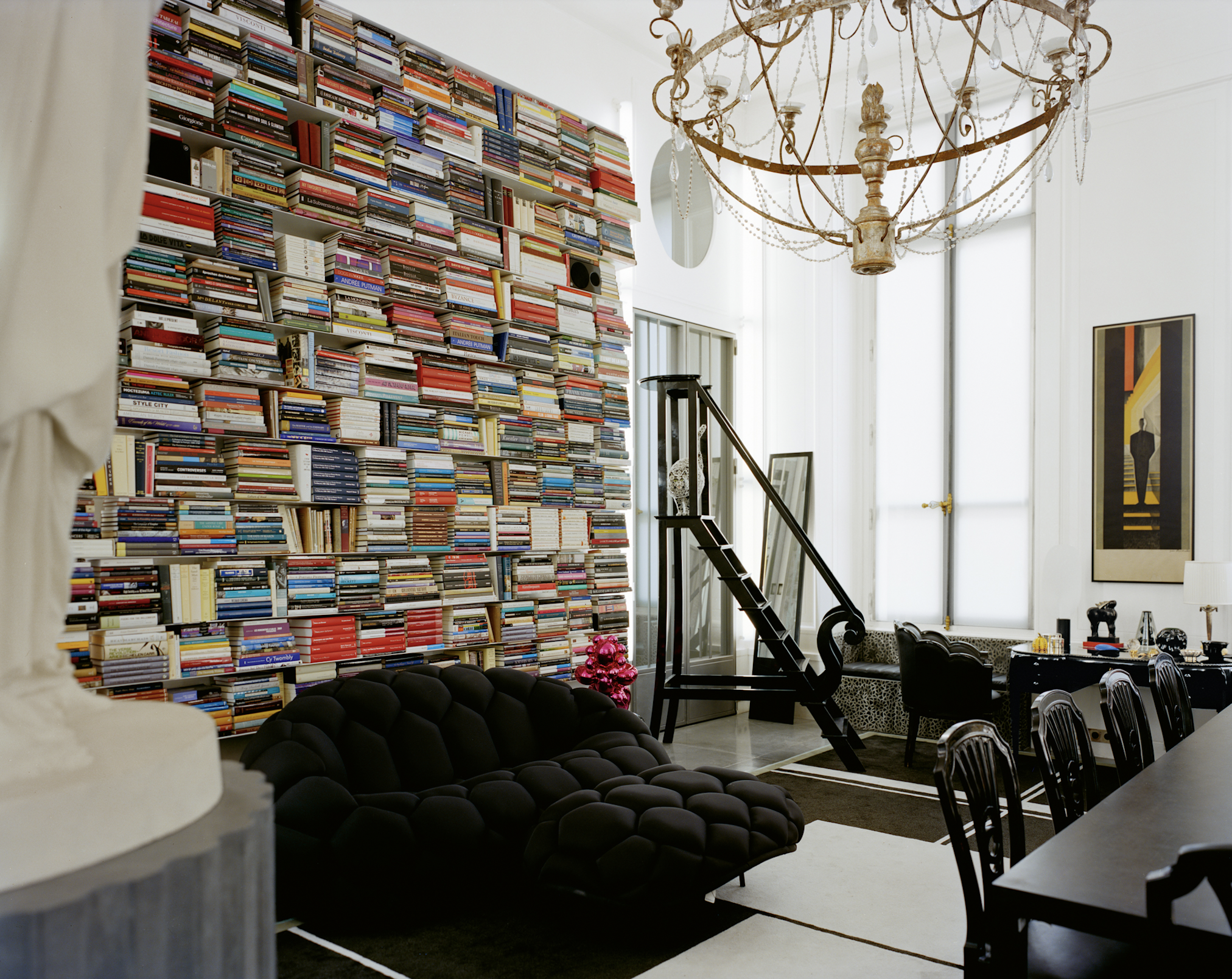
In fact, when the first Lagerfeld interior was featured in a 1968 spread for L’OEil magazine, the editorial describes him merely as a “stylist”. The photographs of the apartment in an 18th-century mansion on rue de Université, show walls lined with plum-coloured rice paper, or lacquered deepest chocolate brown in sharp contrast to crisp, white low ceilings that accentuated the horizontality that was fashionable among the extremely fashionable at the time. Yet amid this setting of aggressively au courant modernism, the anachronistic pops of Art Nouveau and Art Deco objects foreshadow the young Karl’s innate gift for creating strikingly original environments whose harmony is achieved through the deft interplay of contrasting styles and contexts.
Lagerfeld learned early on that presenting himself in a succession of gem-like domestic settings was good for crafting his image. But Lagerfeld’s houses not only provided him with publicity, they also gave him an excuse to indulge in his greatest passion. Shopping!
By 1973, Lagerfeld was living in a new apartment at Place Saint–Sulpice where his acquisition of important Art Deco treasures continued unabated. Now a bearded and muscular disco dandy, he could most often be found in the louche company of the models, starlets and assorted hedonistic beauties that gathered around the flamboyant fashion illustrator Antonio Lopez. Lagerfeld was also in the throes of a hopeless love affair with Jacques de Bascher whose favours he reluctantly shared with his nemesis Yves Saint Laurent.
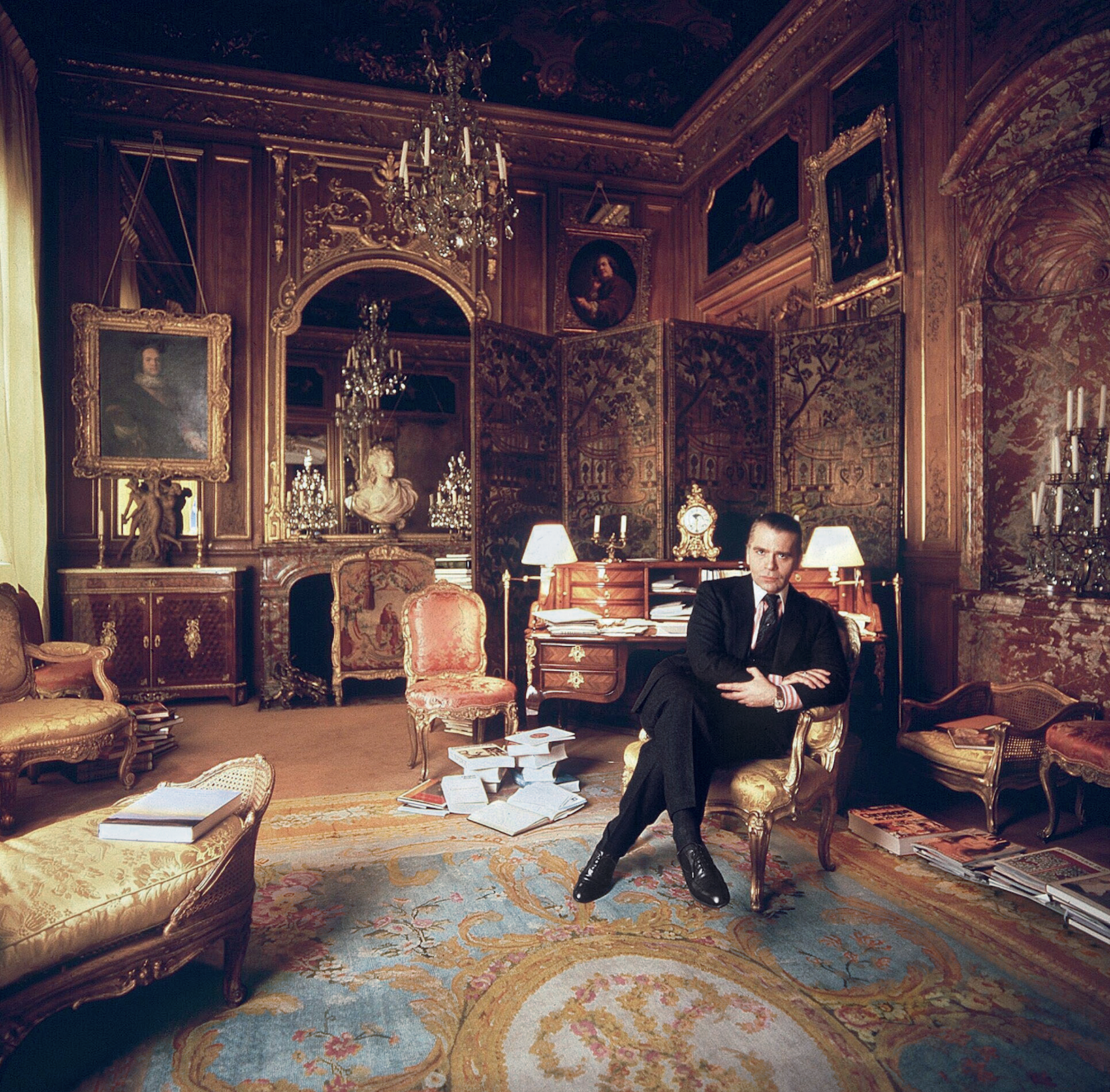
He painted the rooms milky white and lined them with specially commissioned carpets—the tawny patterned striations of which invoked musky wild animal pelts. These lent a stark relief to the sleek, machine-age chrome lines of his Deco furnishings. To contemporary eyes it remains a strikingly original arrangement that subtly conveys the tensions at play in Lagerfeld’s own life: the cocaine fuelled orgies of his lover and friends, hosted in the pristine home of a man who claimed that “a bed is for one person”.
In 1975, a painful falling out with his beloved Jacques, who was descending into the abyss of addiction, saw almost his entire collection of peerless Art Deco furniture, paintings and objects put under the auctioneer’s hammer. This was the first of many auction sales, as he habitually shed the contents of his houses along with whatever incarnation of himself had lived there. Lagerfeld was dispassionate about parting with these precious goods. “It’s collecting that’s fun, not owning,” he said. And the reality for a collector on such a Renaissance scale, is that to continue buying, Lagerfeld had to sell.
Of all his residences, it was the 1977 purchase of Hôtel Pozzo di Borgo, a grand and beautifully preserved 18th-century house, that would finally allow him to fulfill his childhood fantasies of life in the court of Madame de Pompadour. And it was in this aura of Rococó splendour that the fashion designer began to affect, along with his tailored three-piece suits, a courtier’s ponytailed and powdered coif and a coquettish antique fan: marking the beginning of his transformation into a living, breathing global brand that even those with little interest in fashion would immediately recognise.
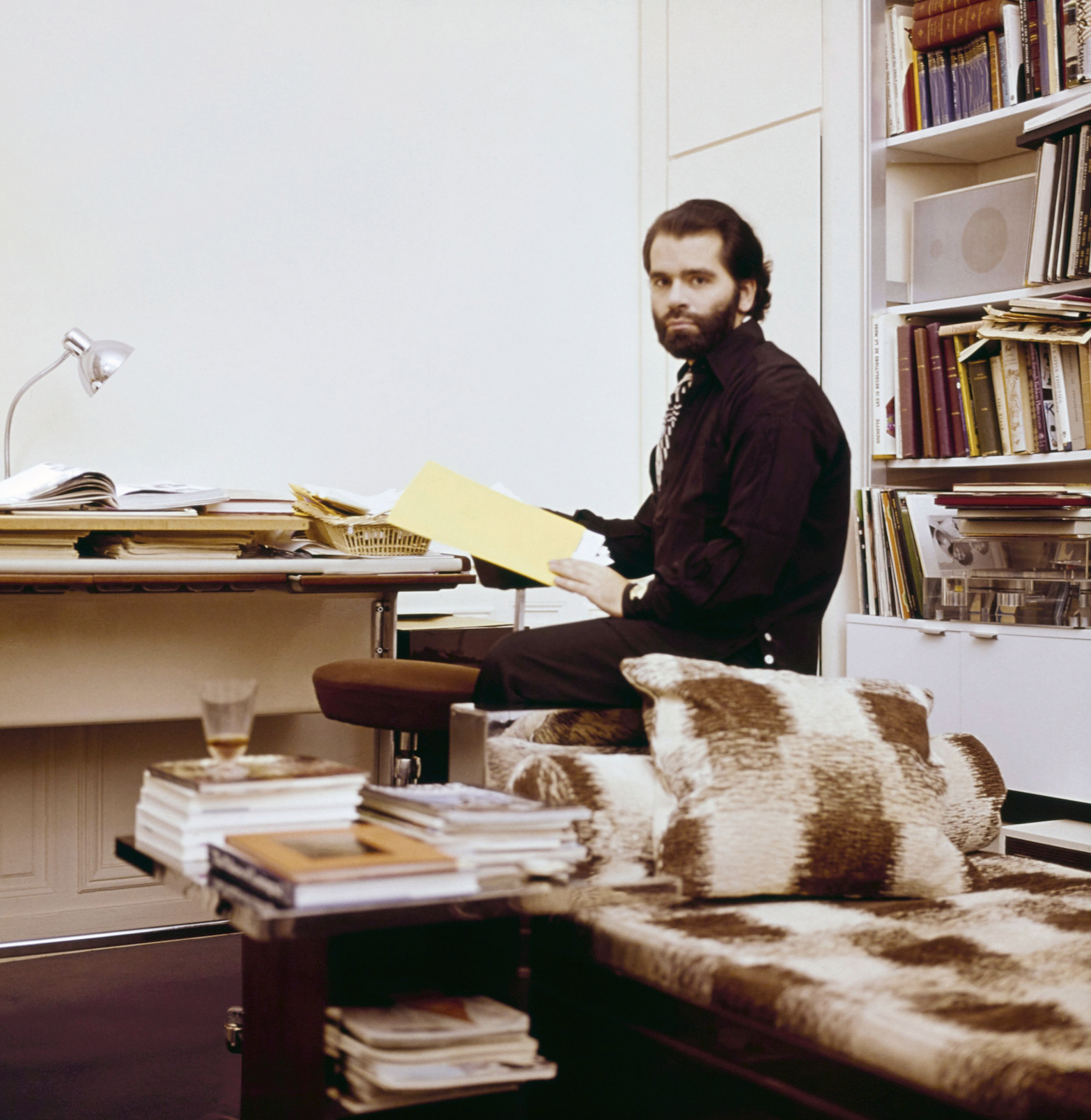
Lagerfeld’s increasing fame and financial success allowed him to indulge in an unprecedented spending frenzy, competing with deep-pocketed institutions like the Louvre to acquire the finest, most pedigreed pearls of the era—voluptuously carved and gilded bergères; ormolu chests; and fleshy, pastel-tinged Fragonard idylls—to adorn his urban palace. His one-time friend André Leon Talley described him in a contemporary article as suffering from “Versailles complex”.
However, in mid-1981, and in response to the election of left-wing president, François Mitterrand, Lagerfeld, with the assistance of his close friend Princess Caroline, became a resident of the tax haven of Monaco. He purchased two apartments on the 21st floor of Le Roccabella, a luxury residential block designed by Gio Ponti. One, in which he kept Jacques de Bascher, with whom he was now reconciled, was decorated in the strict, monochromatic Viennese Secessionist style that had long underpinned his aesthetic vocabulary; the other space, though, was something else entirely, cementing his notoriety as an iconoclastic tastemaker.
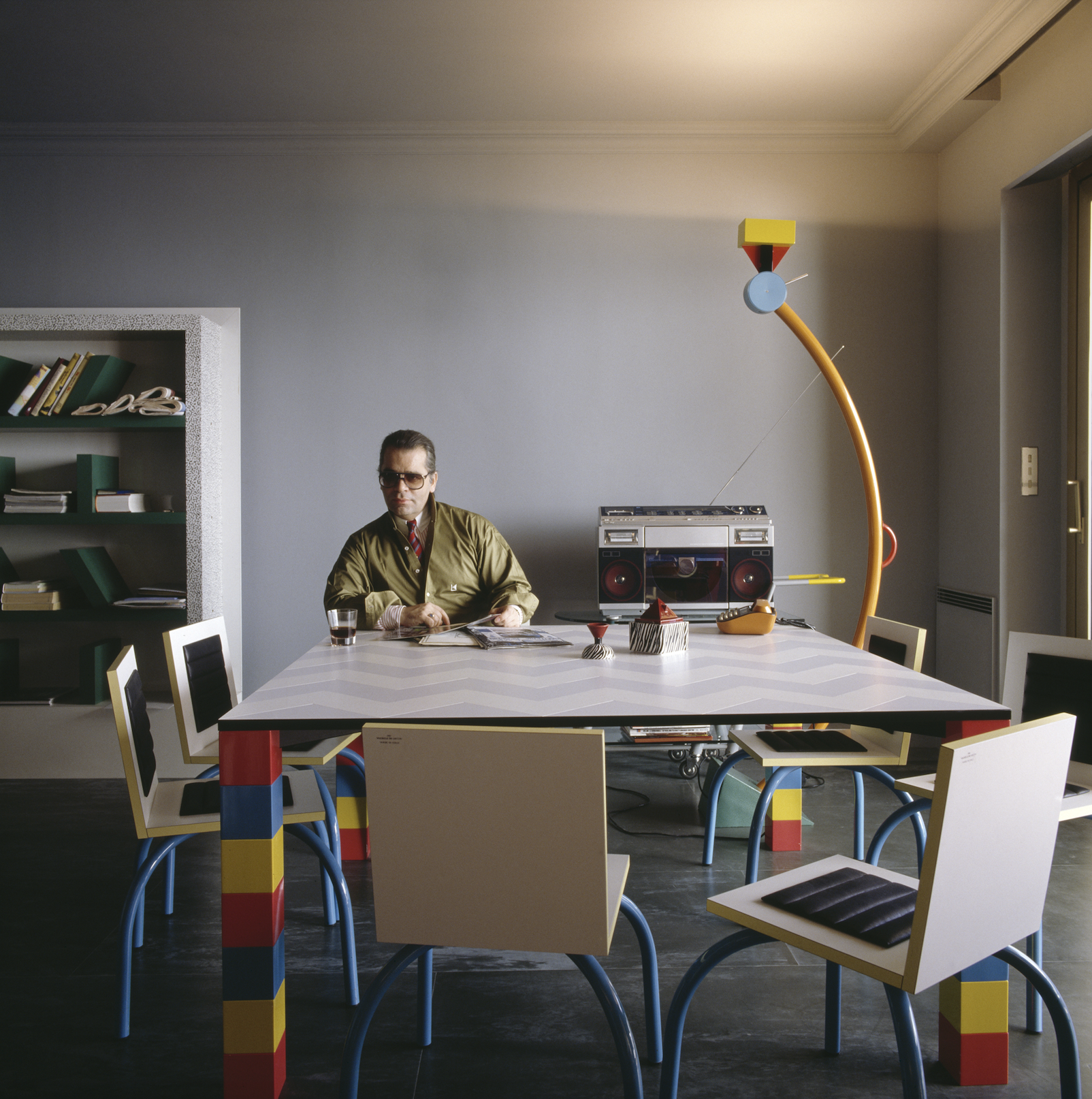
Lagerfeld had recently discovered the radically quirky designs of the Memphis Group led by Ettore Sottsass, and bought the collective’s entire first collection and had it shipped to Monaco. In a space with no right angles, these chaotically colourful, geometrically askew pieces—centred on Masanori Umeda’s famous boxing ring—gave visitors the disorientating sensation of having entered a corporeal comic strip. By 1991, the novelty of this jarring postmodern playhouse had inevitably worn thin and once again he sent it all to auction, later telling a journalist that “after a few years it was like living in an old Courrèges. Ha!”
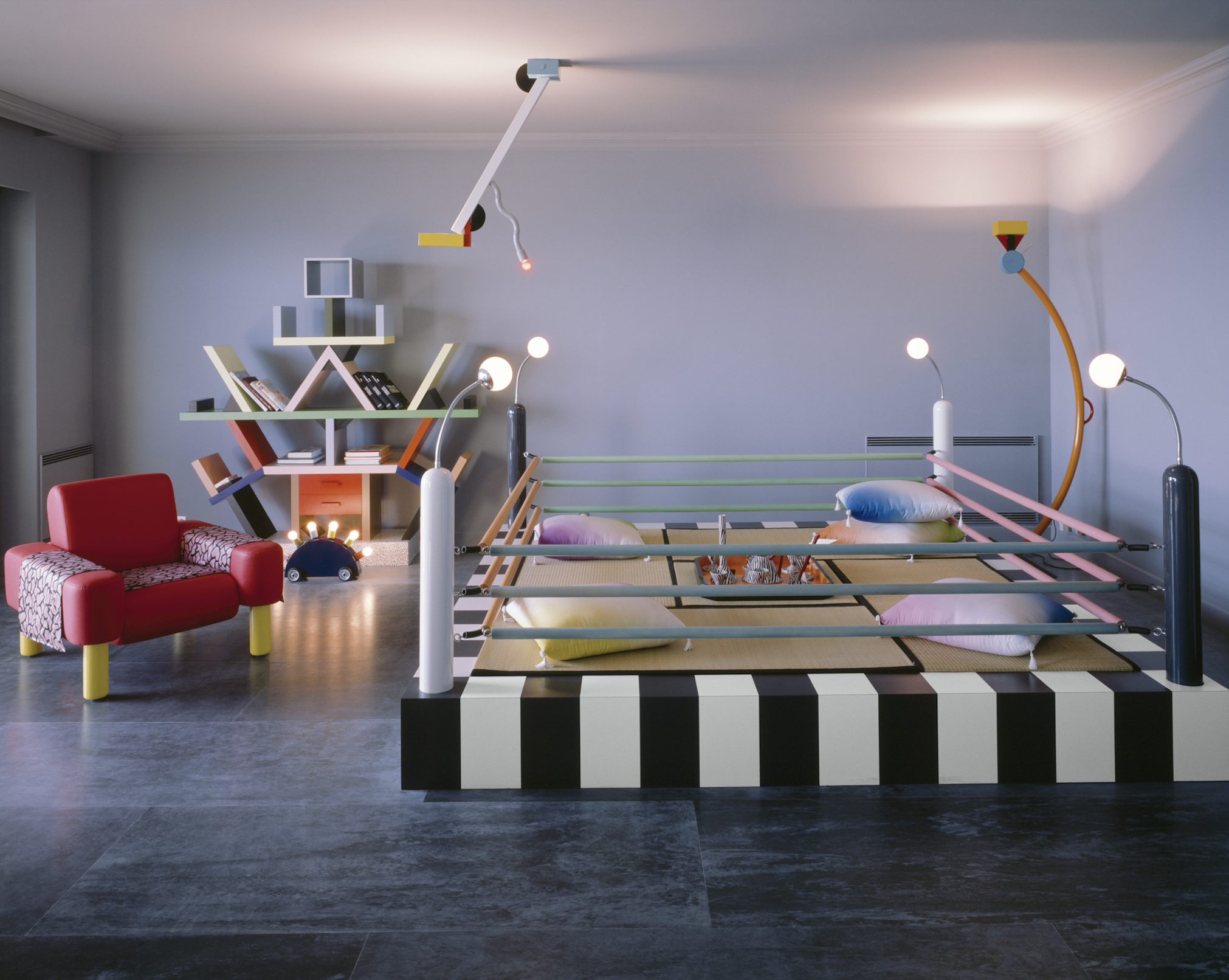
In 1989, de Bascher died of an AIDS-related illness, and while Lagerfeld’s career continued to flourish, emotionally the famously stoic designer was struggling. In 2000, a somewhat corpulent Lagerfeld officially ended his “let them eat cake” years at the Hôtel Pozzo di Borgo, selling its sumptuous antique fittings in a massive headline auction that stretched over three days. As always there were other houses, but now with his longtime companion dead, and his celebrity metastasising making him a target for the paparazzi, he began to look less for exhibition spaces and more for private sanctuaries where he could pursue his endless, often lonely, work.
His next significant house was Villa Jako, named for his lost companion and built in the 1920s in a nouveau riche area of Hamburg close to where he grew up. Lagerfeld shot the advertising campaign for Lagerfeld Jako there—a fragrance created in memorial to de Bascher. The house featured a collection of mainly Scandinavian antiques, marking the aesthetic cusp between Art Nouveau and Art Deco. One of its rooms Lagerfeld decorated based on his remembrances of his childhood nursery. Here, he locked himself away to work—tellingly—on a series of illustrations for the fairy tale, The Emperor’s New Clothes. Villa Jako was a house of deep nostalgia and mourning.
But there were more acts—and more houses—to come in Lagerfeld’s life yet. In November 2000, upon seeing the attenuated tailoring of Hedi Slimane, then head of menswear at Christian Dior, the 135 kg Lagerfeld embarked on a strict dietary regime. Over the next 13 months, he melted into a shadow of his former self. It is this incarnation of Lagerfeld—high white starched collars; Slimane’s skintight suits, and fingerless leather gloves revealing hands bedecked with heavy silver rings—that is immediately recognisable some five years after his death.
The 200-year-old apartment in Quái Voltaire, Paris, was purchased in 2006, and after years of slumber Lagerfeld—a newly awakened Hip Van Winkle—was ready to remake it into his last modernist masterpiece. He designed a unique daylight simulation system that meant the monochromatic space was completely without shadows—and without memory. The walls were frosted and smoked glass, the floors concrete and silicone; and any hint of texture was banned with only shiny, sleek pieces by Marc Newson, Martin Szekely and the Bouroullec Brothers permitted. Few guests were allowed into this monastic environment where Lagerfeld worked, drank endless cans of Diet Coke and communed with Choupette, his beloved Birman cat, and parts of his collection of 300,000 books—one of the largest private collections in the world.
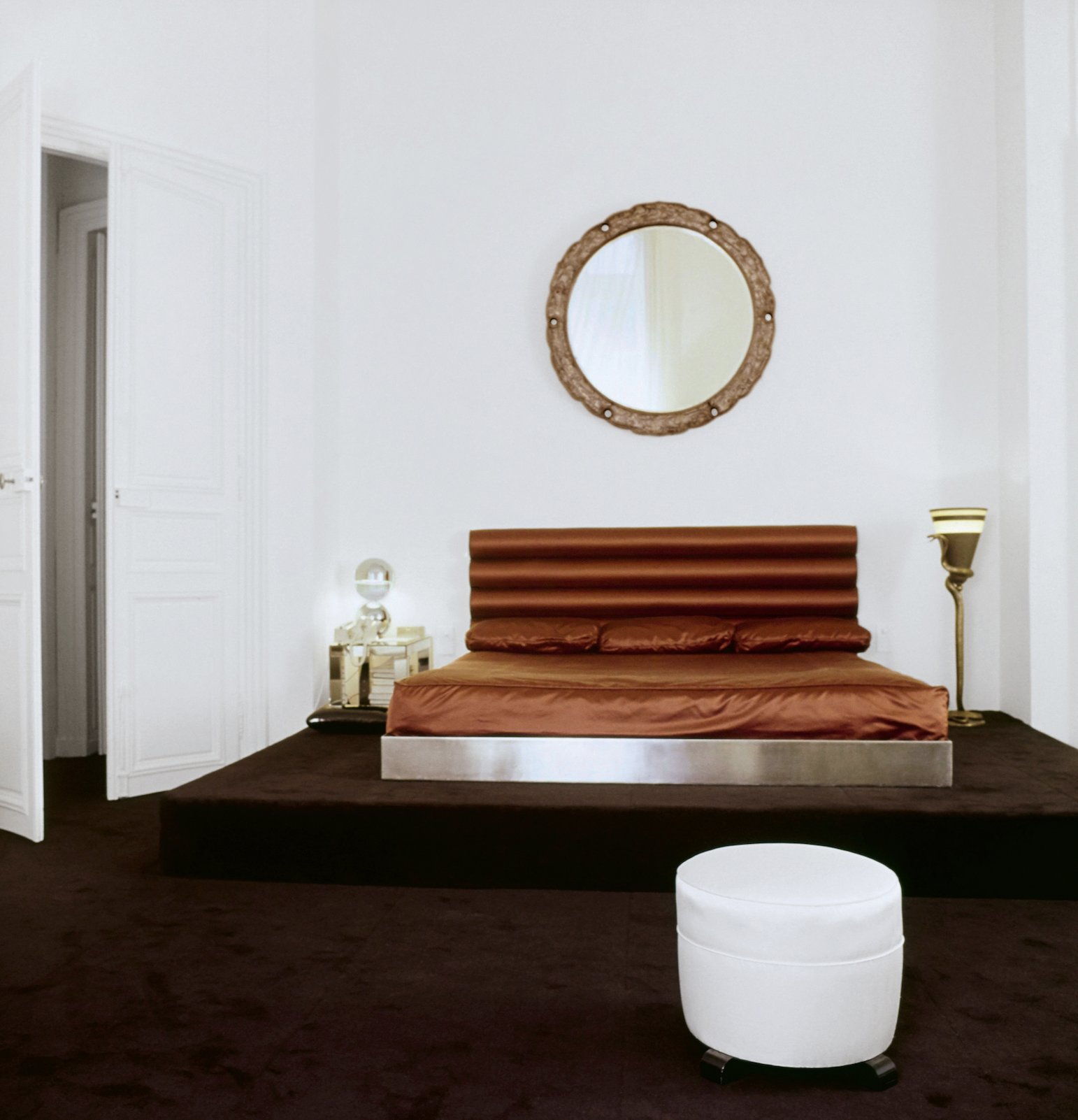
Lagerfeld died in 2019, and the process of dispersing his worldly goods is still ongoing. The Quái Voltaire apartment was sold this year for US$10.8 million (around $16.3 million). Now only the rue de Saint-Peres property remains within the Lagerfeld trust. Purchased after Quái Voltaire to further accommodate more of his books—35,000 were displayed in his studio alone, always stacked horizontally so he could read the titles without straining his neck—and as a place for food preparation as he loathed his primary living space having any trace of cooking smells. Today, the rue de Saint-Peres residence is open to the public as an arts performance space and most fittingly, a library.
You may also like.
By Josh Bozin
24/07/2024
Watch This Space: Mike Nouveau
Meet the game-changing horological influencers blazing a trail across social media—and doing things their own way.
In the thriving world of luxury watches, few people own a space that offers unfiltered digital amplification. And that’s precisely what makes the likes of Brynn Wallner, Teddy Baldassarre, Mike Nouveau and Justin Hast so compelling.
These thought-provoking digital crusaders are now paving the way for the story of watches to be told, and shown, in a new light. Speaking to thousands of followers on the daily—mainly via TikTok, Instagram and YouTube—these progressive commentators represent the new guard of watch pundits. And they’re swaying the opinions, and dollars, of the up-and-coming generations who now represent the target consumer of this booming sector.
—
MIKE NOUVEAU

Can we please see what’s on the wrist? That’s the question that catapulted Mike Nouveau into watch stardom, thanks to his penchant for highlighting incredibly rare timepieces across his TikTok account of more than 400,000 followers. When viewing Nouveau’s attention-grabbing video clips—usually shot in a New York City neighbourhood—it’s not uncommon to find him wrist-rolling some of the world’s rarest timepieces, like the million-dollar Cartier Cheich (a clip he posted in May).
But how did someone without any previous watch experience come to amass such a cult following, and in the process gain access to some of the world’s most coveted timepieces? Nouveau admits had been a collector for many years, but moved didn’t move into horology full-time until 2020, when he swapped his DJing career for one as a vintage watch specialist.
“I probably researched for a year before I even bought my first watch,” says Nouveau, alluding to his Rolex GMT Master “Pepsi” ref. 1675 from 1967, a lionised timepiece in the vintage cosmos. “I would see deals arise that I knew were very good, but they weren’t necessarily watches that I wanted to buy myself. I eventually started buying and selling, flipping just for fun because I knew how to spot a good deal.”
Nouveau claims that before launching his TikTok account in the wake of Covid-19, no one in the watch community knew he existed. “There really wasn’t much watch content, if any, on TikTok before I started posting, especially talking about vintage watches. There’s still not that many voices for vintage watches, period,” says Nouveau. “It just so happens that my audience probably skews younger, and I’d say there are just as many young people interested in vintage watches as there are in modern watches.”
View this post on Instagram
Nouveau recently posted a video to his TikTok account revealing that the average price of a watch purchased by Gen Z is now almost US$11,000 (around $16,500), with 41 percent of them coming into possession of a luxury watch in the past 12 months.
“Do as much independent research as you can [when buying],” he advises. “The more you do, the more informed you are and the less likely you are to make a mistake. And don’t bring modern watch expectations to the vintage world because it’s very different. People say, ‘buy the dealer’, but I don’t do that. I trust myself and myself only.”
—
Read more about the influencers shaking up horology here with Justin Hast, Brynn Wallner and Teddy Baldassare.
You may also like.
By Josh Bozin
24/07/2024
This Pristine 1960 Ferrari 250 Spider Could Fetch $24 Million at Auction
The car wears the same colours and has the same engine it left the factory with.
Some Ferraris are just a little bit more important than others.
Take, for example, the 1960 250 GT SWB California that RM Sotheby’s is auctioning off during this year’s Monterey Car Week. Any example of the open-top beauty would attract interest, but this one just so happens to be the first one that was built.
The 250 is one of the most legendary series of cars in Ferrari history. Between 1952 and 1964, the company released 21 different 250 models—seven for racetracks, 14 for public roads—of which the “Cali Spider” might be the most well regarded, thanks to its potent V-12 and a Pininfarina-penned design that is one of the most beautiful bodies to grace an automobile. The roadster, which was specifically built for the U.S., made its debut in 1957 as a long-wheel-base model (LWB), but it wasn’t until the SWB model debut in 1960 that it became clear how special it was. This example isn’t just the first to roll off the line. It’s the actual car that was used to introduce the world to the model at the 1960 Geneva Motor Show.
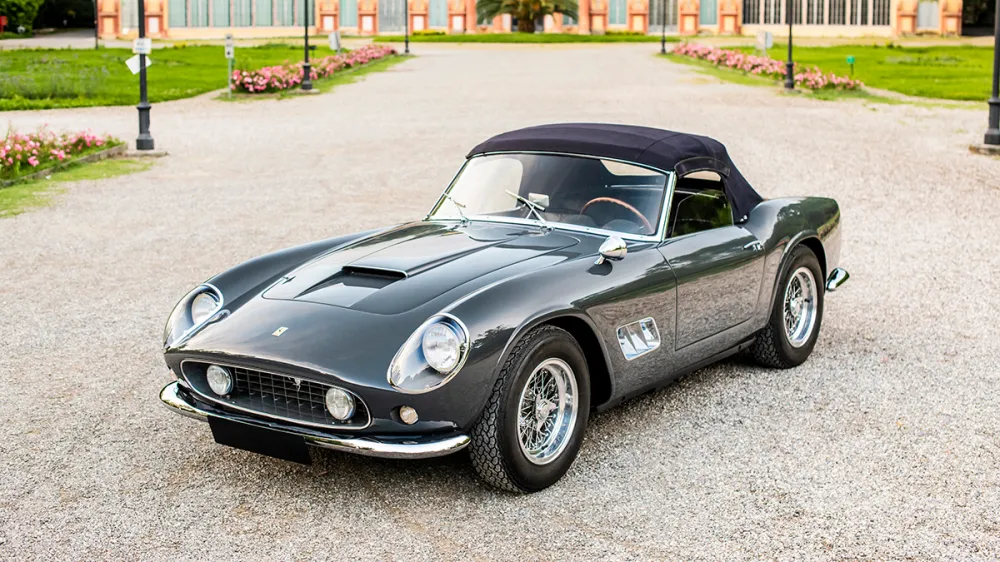
Just 56 examples of the 250 GT SWB California Spider would be built by Scaglietti during the three years it was in production. The first of those, chassis 1795 GT, is finished in a glossy coat of Grigio. The two-door had a red leather interior at Geneva but was returned to the factory and re-outfitted with black leather upholstery before being delivered to its original owner, British race car driver John Gordon Bennet. Six-and-a-half decades later the car looks identical to how it did when it left the factory the second time.
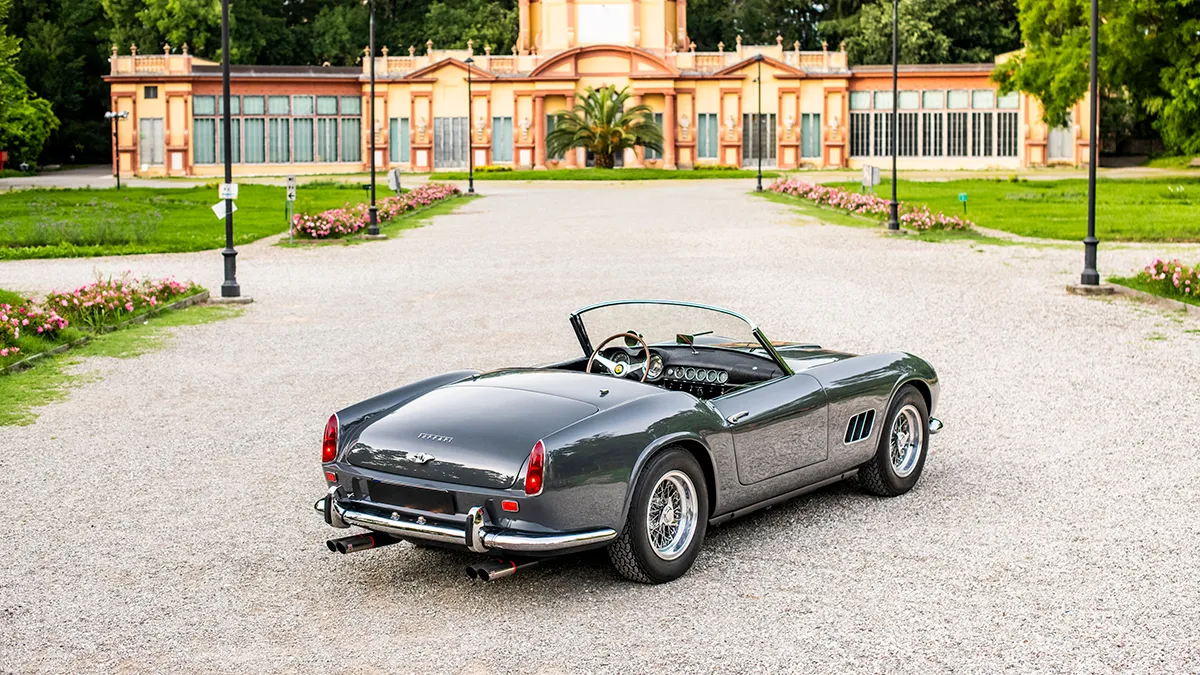
In addition to its original bodywork, the chassis 1795 GT features its original engine, gearbox, and rear axle. That mill is the competition-spec Tipo 168, a 3.0-litre V-12 that makes 196.1 kW. That may not sound like much by today’s standards, but, when you consider that the 250 GT SWB California Spider tips the scales around 952 kilograms, it’s more than enough.
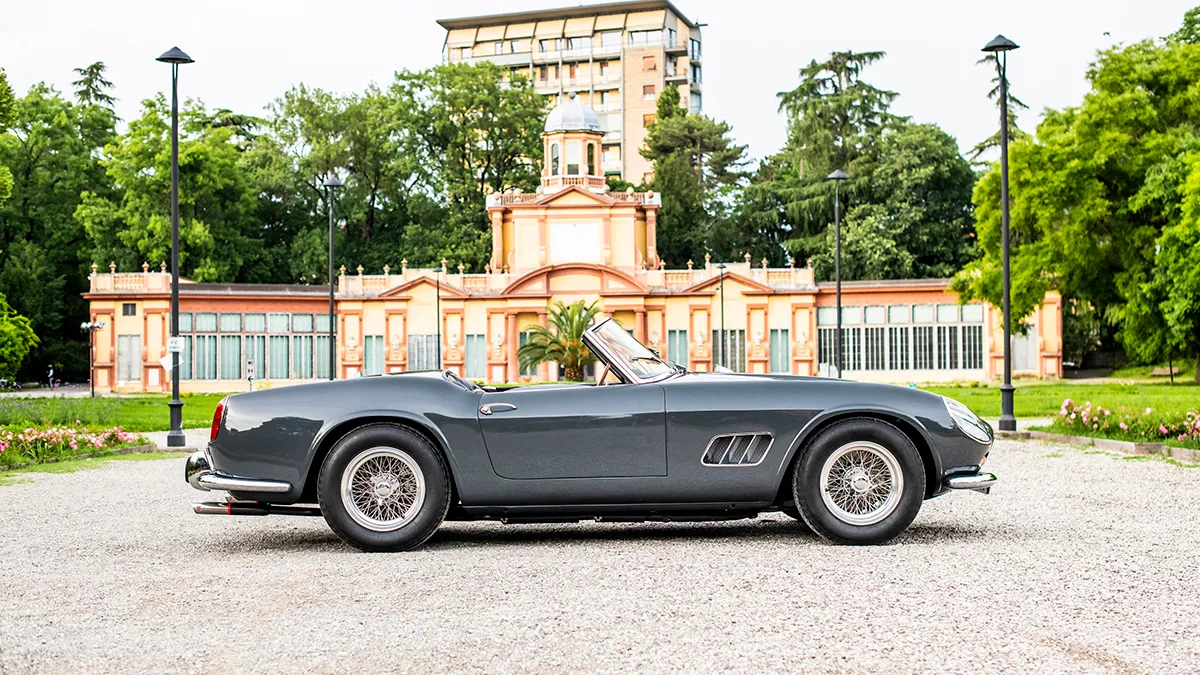
The first 250 GT SWB California Spider is scheduled to go up for bid during RM Sotheby’s annual Monterey Car Week auction, which runs from Thursday, August 15, to Saturday, August 17. Unsurprisingly, the house has quite high hopes for the car. The car carries an estimate of between $24 million and $26 million, which could make it one of the most expensive cars ever sold at auction.
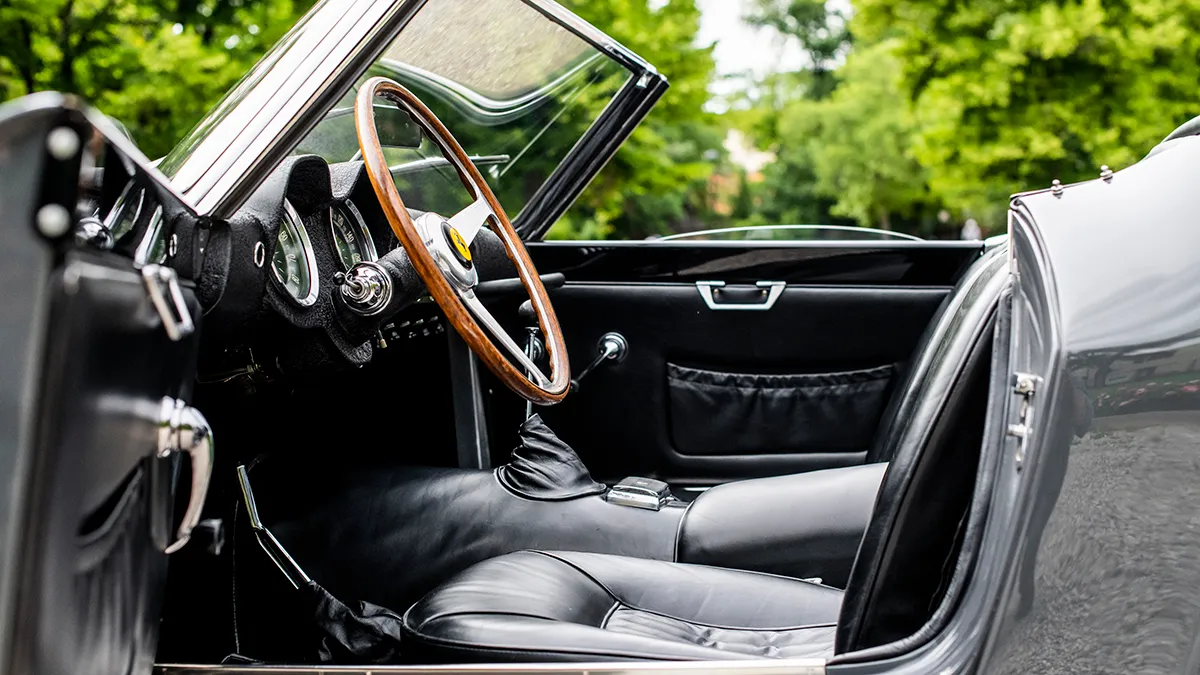
You may also like.
By Josh Bozin
24/07/2024






